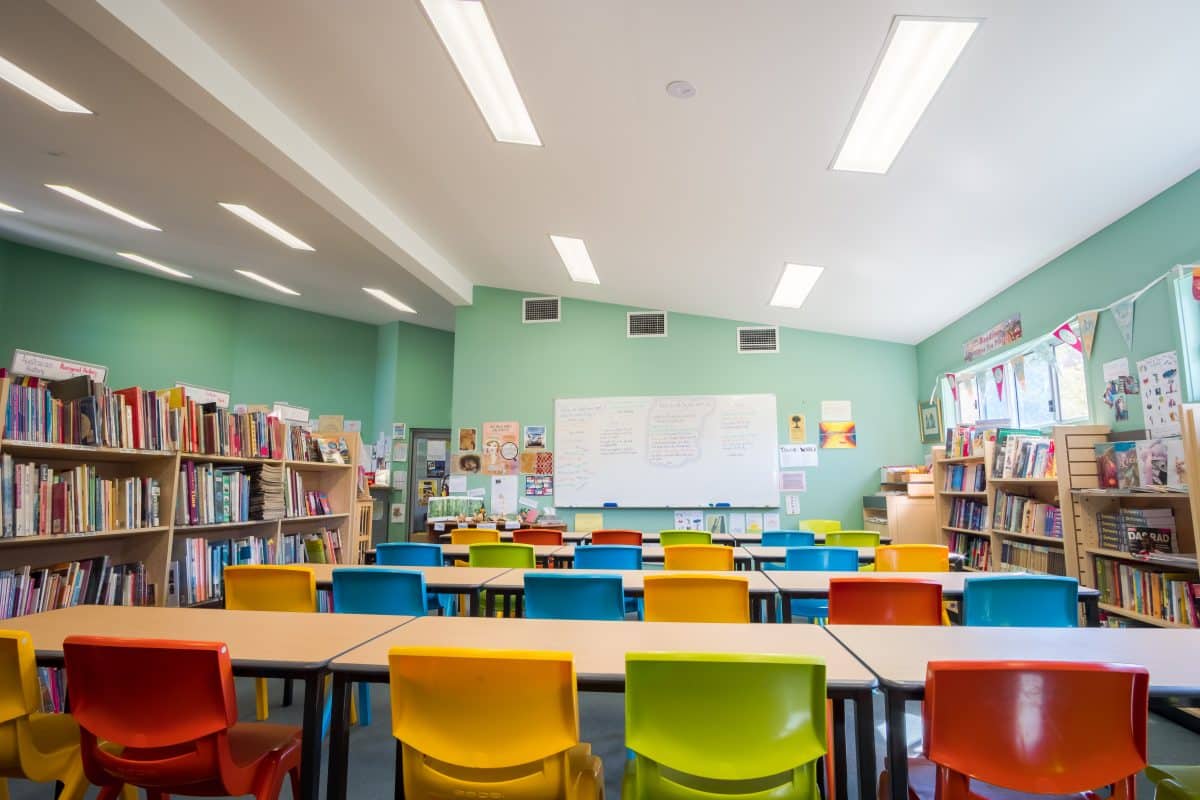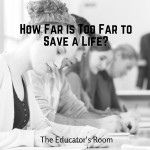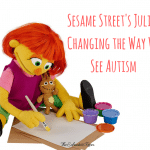Overview:
The Netflix series “Love on the Spectrum” is a great way to celebrate neurodiversity- especially for those students with autism.
In recent years, there has been a remarkable push for diversity and inclusivity in the media. As a special educator specializing in autism, I have often felt saddened by the lack of autism representation in the media in the midst of this new media revolution. Recently, I came across the Netflix series “Love on the Spectrum” and was immediately hooked. The show focuses on the intricacies of dating and relationships and the struggles individuals with autism may face when trying to find love.
As a special education teacher specializing in autism and having taught a low-incidence disability classroom for half a decade, watching this show has infused me with even more love for what I do. It offers a glimpse into what my students might achieve in the future, particularly since I work with them at such a young age and often miss out on witnessing the tremendous long-term goals they accomplish beyond their time in my classroom. My heart swelled with joy as I watched individuals with autism push past their boundaries and comfort zones, take risks, and show the world that they, too, are capable of unique and beautiful relationships.
History of Segregation and Marginalization
Despite the recent push for inclusivity, it is essential to acknowledge the long history of discrimination and marginalization faced by individuals with disabilities, including autism.
Almost unbelievably, the Americans with Disabilities Act (ADA) was only passed in 1990. The ADA prohibits discrimination against individuals with disabilities in all areas of public life, including employment, education, transportation, and public accommodations.
Even more so it was only in the year 1975 that students with disabilities were given equal rights in the American school system. In 1975, the Individuals with Disabilities Education Act (IDEA) was passed. Before the enactment of this act, students with disabilities faced significant barriers when accessing education and were not granted a quality education as was promised to their neuro-typical peers.
Prior to the enactment of the Individuals with Disabilities Education Act (IDEA) in 1975, students with disabilities faced significant barriers to accessing a quality education. Before the passing of IDEA, students with disabilities were often excluded. They were not permitted to learn alongside their neurotypical classmates, often being segregated and made to go to different schools altogether. Even more so, many children with disabilities were left without access to any form of education at all. It is unbelievable to think that this type of discrimination was normal in our country less than 50 years ago.
Passing IDEA was a landmark piece of legislation that allowed for a complete transformation of special education in the United States. IDEA moved special education students from not being promised any type of education at all to guaranteeing all students with disabilities a free and appropriate public education (FAPE) in the least restrictive environment (LRE) possible.
Imagine: for the first time, students with disabilities are not only allowed to go to school with their neuro-typical peers but learning in the same classroom as them for the first time in the history of our country. Schools became required to provide students with individualized education programs (IEPs) tailored to each student’s unique needs and ensure they have access to the same educational opportunities as their non-disabled peers. Additionally, IDEA protects the rights of students and their parents, establishing procedures for evaluation, eligibility determination, and dispute resolution. This act radically changed the lives of students with disabilities in our country and gave them the rights that they were owed.
Representation and visibility
“Love on the Spectrum” has been instrumental in bringing visibility to the autism community and the masses. As the most popular streaming platform in the world with 247.2 million users, Netflix offers unparalleled access to this new and diverse content, allowing millions of people to engage with the experiences of individuals on the spectrum. As a reality dating show, “Love on the Spectrum” provides viewers with a unique opportunity to step into the cast members’ lives. The intimate setting, with each cast member introduced individually in their bedroom, creates a personal connection. The producers delve into each cast member’s hobbies, likes, and dislikes, fostering a sense of familiarity and understanding.
This approach allows viewers who may have never met anyone with autism personally or had a friend or family member with autism to feel like they understand autism on a more personal level. By humanizing the autism experience through relatable and authentic storytelling, “Love on the Spectrum” not only brings awareness to the autism community but also fosters greater empathy and understanding among viewers in ways that were previously unimaginable.
Social Media Platforms for Individuals with Autism
In addition to “Love on the Spectrum”, social media has allowed for a greater platform of visibility for individuals with autism to speak on their experiences; both their triumphs and their struggles. In a recent conversation with a colleague about the show “Love on the Spectrum,” she brought up her concerns, asking me if the show depicted a complete picture of autism because she felt that the media has recently been spotlighting more of the successful moments of living with autism, but often fails to show the struggles that individuals with autism face on a daily basis. Although the show does showcase more of the triumphs of the individuals, it does take the time to allow cast members to talk about the struggles that they face both in dating and in their lives as a whole.
On the show, one of the cast members, Abbey, talks briefly of her struggles as a child with autism and how she was kicked out of her preschool at two and a half and was not able to go into a program without the support of a 1:1 aid. Currently, on Abby and her mother’s Instagram and TikTok platforms, she and her mother show more of the daily routines and structures they have to create to help Abbey learn skills that will one day allow her to be independent.
In a recent video, Abbey practices going into a pharmacy and getting her prescription for the first time while her mother waits for her in the car. In another video, Abbey and her mother discuss Abbey’s struggle with sounds and what she should do if she is bothered by a loud sound in public, such as a crying baby; Abbey can either cover her ears or leave the room. Despite these struggles, Abbey has been happy with her boyfriend, David, for two years.
The entirety of the Autism Spectrum
As a special educator specializing in autism, I wanted to highlight that although “Love on the Spectrum” is able to highlight many examples of individuals on the spectrum looking for love, it cannot show the entirety of the autism spectrum. Many individuals with autism have intellectual and cognitive delays, which greatly impede them from living their lives independently. One Instagram user, Tamara Rachelle, brings awareness to this aspect of autism through her channel “LivingWithLilac.”
In the videos, Tamara posts about her life with her daughter, Lilac, and shows both the triumphs and struggles that her daughter experiences. Tamara discusses how, although her daughter is learning and making improvements, her delays are so significant that she will always have to be in her care or the care of her sisters. She explains that Lilac has an intellectual disability alongside her autism that makes learning and living on her own more difficult than it may be for other individuals on the spectrum.
I have loved watching Tamara’s videos because they show a side of autism that even the media is not able to portray and the struggles that I see many of my students go through year after year. Social media has emerged as a powerful tool for fostering understanding and appreciation of diversity in ways previously unimaginable.
Utilizing “Love on the Spectrum” for Life Skills Education
“Love on the Spectrum” has prompted me to reflect deeply on the post-graduation journeys of my students, extending beyond their pre-K-12 education. While I may not always have the privilege of witnessing my students’ progression beyond their school years, I consider it vital to equip them with every possible tool for success beyond my classroom walls. “Love on the Spectrum” has led me to consider what additional life skills I may need to support my students in, ones that I hadn’t previously incorporated into my teaching, to better prepare them for the world awaiting them beyond the classroom.
Throughout the show, many cast members spoke about their experiences of being on the spectrum and struggling during their school years to have meaningful social interactions with their peers. These challenges often stem from difficulties understanding social cues, interpreting nonverbal communication, and navigating the complexities of social dynamics. For individuals with autism, social interactions may feel overwhelming and unpredictable, leading to feelings of isolation and exclusion. Some individuals with autism may not have the tools to know how to respond when in social situations and may feel lost in conversation, not knowing how to respond. As educators, it’s crucial to recognize these challenges and provide targeted support to help students develop the social skills they need to thrive in various social settings.
Role Playing Exercises
I have implemented and embedded social skill practice within the classroom to support my students with their social skills. One way is by creating role-playing exercises where students can practice different social scenarios that they may encounter. By practicing these scenarios in the classroom, my students have a space where we can discuss different ways to answer questions or respond to situations. For example, in a recent role-playing exercise in my classroom, my students practiced playing kickball since this is a scenario that my students have been struggling with recently on the playground playing with their general education peers. My students on the spectrum might yell when they lose a point or not know how to ask to join the game. By practicing these situations in the classroom, we can talk about different scenarios that might arise and different choices that we can make if we are confused or upset.
I was very proud of one of my students who was upset when they didn’t get a turn for kickball. Instead of yelling, I decided to step out of the situation and take deep breaths before returning. We had previously practiced this technique in a role-playing scenario in the classroom. Teachers can implement these role-playing activities in their classrooms whether they teach students on the spectrum in pre-k up to 12th grade, as situations arise on every level that students may have to talk through or practice.
We see an example of role-playing in “Love on the Spectrum” when one cast member, Connor, role-played with his mother to call a girl he had been on a date with to tell her he did not want to continue dating her. Connor’s mother practiced being the girl while Connor practiced a respectful and kind way to break off seeing her. They even practiced what he might say if she was sad or upset on the call. After practicing with his mother, Connor called the girl and was pleasantly surprised that he could complete the call, and the girl took the information well.
Cooperative Learning
Cooperative learning activities designed to practice communication, collaboration, and conflict-resolution skills have also been very effective in my classroom. One simple way that my students have been working on these skills this year is through board games. Board games support students with autism in understanding how to take turns, manage conflict, and collaborate with peers. When playing board games, I can break down social interactions into manageable steps and provide opportunities for repeated practice in a supportive environment. Students can gradually build confidence and competence in their social abilities. One board game that my 3rd graders are currently loving is “Candy Land.”
When starting a game of Candy Land, my students first have to communicate, discuss, and agree upon which of them gets to be which color piece. They then communicate which of the 2-4 playings will be going first and why. We work on conflict resolution if one of my students gets upset that they do not go first, and we talk about how even if they are not going first in this game, they may get to go first in the next few times that we play.
While playing the games, my students have to communicate with each other about whose turn it is, collaborate on where they will hold the cards, and work on conflict resolution when they get upset if they are in the lead and then start to fall behind. Although many of these skills may seem simple or self-explanatory to many of their general education peers, in my classroom, my students are learning important skills that will help them to thrive in social settings past the walls of my classroom.
Social Stories that Support Social Interaction
Another way that I support my students in bettering their social skills is by creating social stories for them that explicitly teach a social interaction they are struggling with. Usually, the social stories I create for my students are personal to each student and specifically target their needs. For example, this year in PE, one of my students hit their general education peers to get their attention. This student is non-verbal and, therefore, doesn’t have the background knowledge to get their peer’s attention appropriately and respectfully. This year, my student has gotten an augmentative and alternative communication (AAC) device to support his communication. An AAC device is a piece of technology that supports students in communicating. My student’s AAC device is an iPad with an app called Touch Chat, where they can find icons that help them speak in full sentences without using their physical speech.
In my social story for this student, I created a story about a boy who goes to PE, is excited to see students from other classrooms, and wants to play with them. In the story, the boy walks up to his peers, takes his AAC device, and finds the icons that say, “hi, can I play with you?”. After this, in the story, the boy joins the other students to play. After going through the story, my student and I practiced finding the icons on his device and then asking peers in his classroom to play in anticipation of later trying again at PE.
At PE, I went with the student to use his AAC device and practice this social interaction. The student was able to ask his peers to play and was excited that the other children wanted to play with him instead of getting angry with him as they had previously when he hit them. Other teachers can and should use social stories to support them in preparing their students for social situations that they will face when they graduate from school and have to face real-life situations without our support.
Strides in promoting awareness and acceptance
In essence, while “Love on the Spectrum” has undoubtedly made significant strides in promoting awareness and acceptance of autism, it’s important to recognize its limitations in representing the full diversity of the autism spectrum. Despite the progress made in showcasing diversity in media, there is still a need for greater representation and amplification of diverse voices within the autism community. By advocating for inclusiveness and ensuring that everyone’s experiences are acknowledged and valued, we can contribute to a more compassionate and inclusive society for all individuals, regardless of where they fall on the spectrum. By addressing the unique social needs of students with autism and providing targeted support and opportunities for growth, we as educators can empower them to navigate social interactions with confidence and success, paving the way for meaningful connections and inclusive communities in the future.






